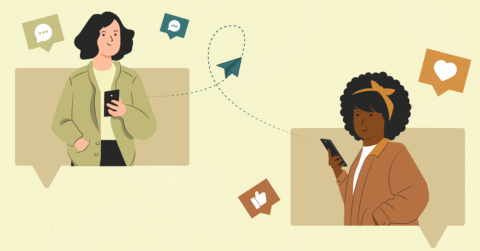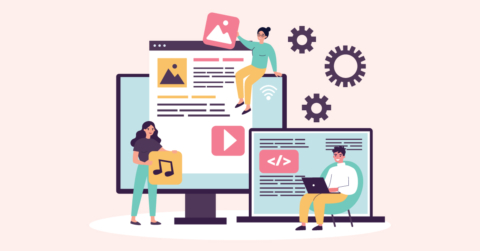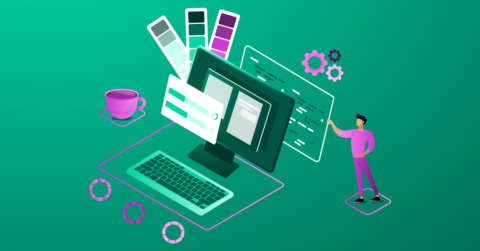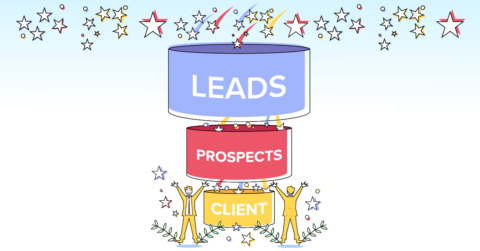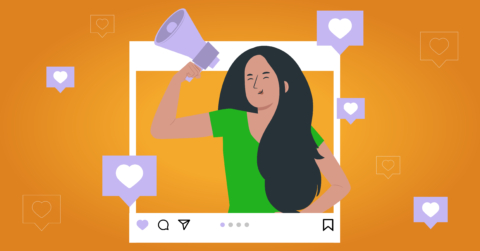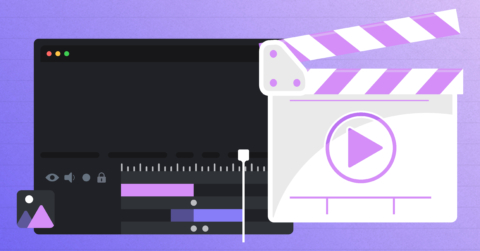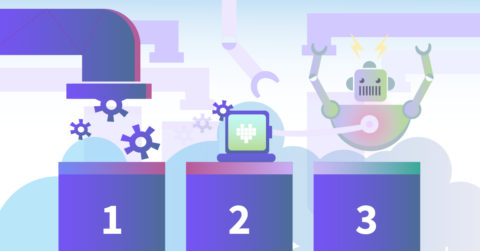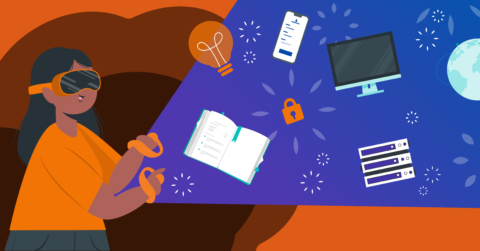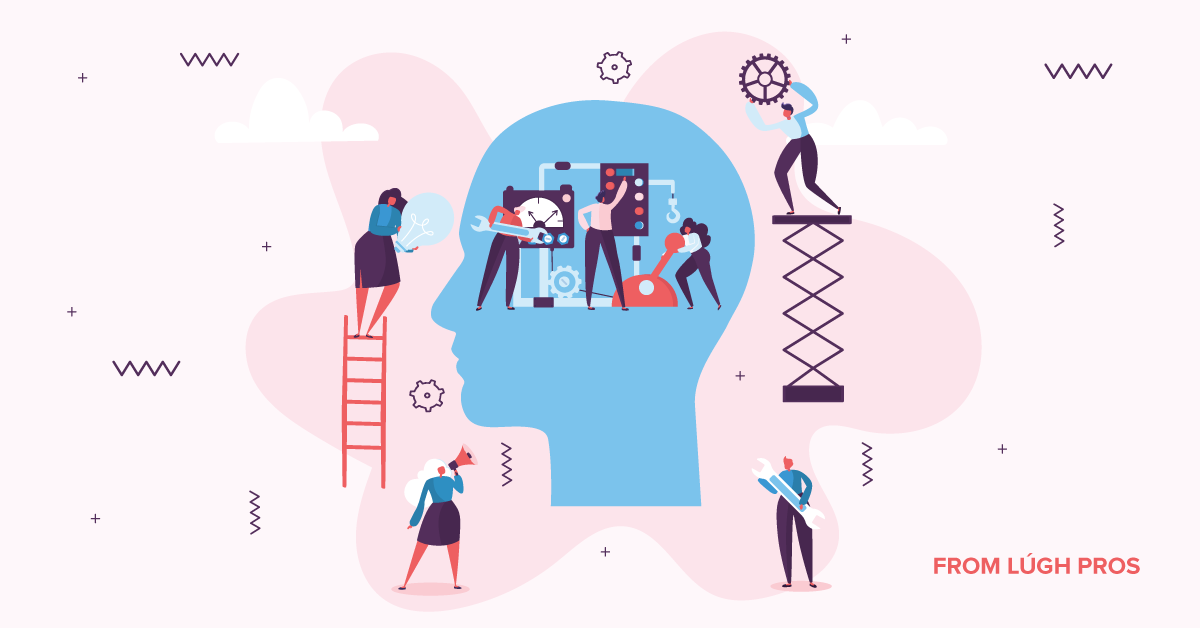
From Lúgh Pros #2: How To Use AI At Your Nonprofit
02/08/24
AI
Artificial Intelligence (AI) is everywhere you look these days. Seems like more and more companies are implementing its power, and having great results because of it. How can you get these results for yourself? What are some things you need to keep in mind? More importantly for you — how do you effectively use AI at nonprofits?
These are the questions we answer in our latest ultimate guide. AI presents a ton of potential for your organization — you just need to know how to use it.
This is the second guide in our “From Lúgh Pros” series. In this series we not only educate you about topics important to nonprofits, but give you valuable insight from our team of industry experts!
- 4 Reasons You Should Care About AI
- 3 General Tips For Using AI At Your Nonprofit
- How To Use AI At Your Nonprofit
- Tools And Resources
- Conclusion
4 Reasons You Should Care About AI
Embracing AI at your nonprofit is not just a choice — it’s a strategic imperative. Still, it’s easy to delay things. It’s easy to postpone really leaning into AI and reaping the benefits that follow.
Not convinced? Here are four compelling reasons why you should care about AI:
It will make you more efficient.
As of now, one of the biggest benefits to AI is how much time it can save you. Are there certain tasks you hate doing? Important responsibilities you have on your team that seem to always keep you busy? There is a good chance AI can automate them. This allows you and the people you work with to focus on high-impact activities… rather than repetitive processes that always seem to bog you down.
It’s still early days.
Many companies and organizations haven’t yet figured out how to use AI. They are either ignoring it completely, or have only just started to dip their toes in. This creates a potential advantage for you. Adopt AI technologies now, and start implementing them in your everyday workflow, and you can only benefit. That said..
Some of your competitors are already using it.
Even though many organizations haven’t yet perfected AI software, some of them have. And almost assuredly, some of them are you direct competitors. This is true for both nonprofits and companies. The fact is, you need to start testing AI if you don’t want to get left behind.
AI isn’t going anywhere.
Like it or not, AI is the future. Maybe it’s overhyped. Maybe it’s not as effective as people claim it to be. Regardless, like many technologies, all it takes is time before it gets increasingly effective and polished. Don’t believe me? According to McKinsey, artificial intelligence will continue to advance year-after-year. The natural result? A world where we don’t remember what it was like before AI. If you want to stay effective far into the future, embracing and learning how to use AI is how you do it.
3 General Tips For Using AI At Nonprofits
While incorporating AI offers numerous benefits to your nonprofit, there are some things to keep in mind. Before we get into actionable information on using AI at nonprofitS below, this is what we’re covering in this section. Remember these more general tips as you roll out AI tools at your organization.
1) AI Isn’t Perfect
Like any technology, you need to understand the limitations of AI. It’s true that AI can excel at a variety of tasks. And in certain areas, it’s already far better than humans. As we point out above, this is one of the major benefits to using AI more at your organization.
That said, it’s not a one-size-fits-all solution. Human oversight is still crucial, and will likely remain so for some time.
2) You Need To Always Be Learning
As we mention numerous times in this article, AI tools and software will only get better. We are at the very beginning in terms of how sophisticated they can really become. This can be both exciting and scary.
The one thing that ensures you stay on top of the technology is continuously learning about it. AI will only get better, and you will benefit the most by always educating yourself on the topic. Be sure to check out the various tools we link throughout the guide.
3) Your Audience Wants To Hear from Humans
Certain things simply can’t (or shouldn’t) be outsourced. This makes sense. The fact is, humans want to deal with other humans. This is unlikely to change regardless of how sophisticated AI gets. It’s tempting to buy into the hype of AI and think it can do everything for your organization. But this isn’t accurate. In fact, it’s not even desirable.
Are there things AI makes faster and more effective? Of course. But for the things that count, and for the things where there is direct contact with your audience, don’t underestimate the power of the human touch. As our team expert says, “AI is just another tool…and the human element is always going to be required.” This is worth keeping in mind as you check out our more actionable tips below.
How To Use AI At Nonprofits
So, the million dollar question: how exactly do you effectively implement AI at nonprofits? Below, we go over a variety of actionable tips. Because this is a guide specifically for nonprofits, we’ve organized these tips into five general categories particularly relevant to nonprofit organizations.
That said, these tips can be relevant to businesses as well. Keep that in mind as you’re reading through them.
1) Content Creation
Content marketing is a fundamental part of any organization’s goals. Here are ways to use AI for it:
- Creation and ideation. Tools like ChatGPT can make it much easier to come up with ideas. It’s all about the prompts that you use and how detailed they are. Choose the right ones and you have new content topics that will not only inform your audience, but position you as an expert. It can also help you with part of the creation process itself — just remember to add your own voice and style! This is essential to ensure you don’t sound like everybody else.
- Content personalization. In just about everything you do, personalization can enhance a person’s experience with your brand. Unfortunately this customization can be difficult to scale. Not so with AI. Consider implementing different tools to customize almost every touchpoint people have with you. Common algorithms can analyze user preferences and deliver personalized content, which increases engagement as a result.
- Video creation. Video content marketing is becoming more and more important. People are increasingly consuming ever-more video content, and many people even use YouTube as their preferred search engine for information. Unfortunately, video has always been much more difficult to make — until now. Various tools make video creation much quicker and effective. Give them a try if you want to start rolling out more videos at your nonprofit.
2) Web Design
Web design is one of the most important things you can focus on. After all, your website is often the first impression somebody will have of your nonprofit. Here are a few ways that AI can help:
- Dynamic content presentation. Imagine if your website and most frequented web pages could look different depending on who was visiting them. Just think about how “customized” each visitor’s experience would be. Sound like a dream? With the right AI tool, it’s not.
- Coding. Writing code will always be an integral part of how web pages are built. In the past, creating this code was exclusively the domain of we developers. Not anymore. Many AI tools not only make the coding process quicker, but potentially even more accurate. Just be sure you have a human to check it!
- Media creation. A website without media (whether it’s pictures or video) is likely a website that is boring your visitors. And if they’re bored, there is little chance they provide a tangible benefit to your nonprofit. With AI, creating media assets that spice up your website has never been easier.
3) Donor Communication
Even if you have great content and a solid website, your donors are what keep your nonprofit alive. Here is how AI can help with donor communication:
- Personalized email campaigns. Is email marketing a huge part of what you do? If so, consider utilizing AI to personalize email campaigns. This improves the overall experience of your email subscribers and gets them more involved in your messaging. Effective personalization is a fundamental part of not only connecting with your audience, but getting them to donate as well.
- Chat support. We have all heard of chatbots — but did you know that AI has only made them better? That’s right — AI programming and deep learning is making chatbots increasingly sophisticated and able to help with difficult questions. This gives near 24/7 support to your audience. It also frees up the time of your team members, allowing them to focus on more pressing tasks.
4) Digital Design
Whereas web design applies specifically to your website, digital design is just about everything else. And like the previous three points, AI can help. Here’s how:
- Automated image creation. Everybody responds better to content when there are images included. With tools like Dall-E, it’s never been easier to create them. This not only ensures you always have the perfect image ready to go, but also that the images you do create are professional and visually appealing.
- Faster digital editing. As a designer, there are often repetitive steps in the creative process that take time and energy. Increasingly, though, AI makes these much quicker. Adobe Photoshop and Illustrator, for example, have gradually started to roll out AI features in their products. This speeds up a designer’s work — and makes “idea to reality” much quicker for all of your editing needs.
5) Fundraising
Last but not least — fundraising. Using AI at nonprofits is particularly appealing because it can increase the total amount of donations you receive. Try out some of these tips:
- Predictive analytics. With certain AI tools, you don’t just understand your audience better — you can also predict their behavior. This is the power of predictive analytics, and it’s a game changer. Do this right and you can target potential contributors much more strategically. If you’re particularly interested in this, be sure to check out the first recommended tool below.
- Campaign optimization. Gone are the days of “set it and forget it” fundraisers. With AI software, you are able to optimize your campaigns on the go, ensuring a strong performance throughout the entire timeline. The benefits here are clear. Not only do you have better fundraisers that people enjoy, but you make more money too!
- Positioning. While not necessarily intuitive, positioning is an important way that AI can contribute to your fundraising efforts. The fact is, investors these days want to see nonprofits that are innovative. Use AI (and use it well), and you are at the forefront of this innovation. This positions you as a nonprofit worth paying attention to. The result? More attention, and more donations.
Tools And Resources For AI At Nonprofits
Using AI at nonprofits can feel difficult during the best of times. It’s a new technology, surrounded by a ton of hype, and can be confusing for even the most capable team. Thankfully, there are a ton of tools and resources that make your AI journey just a little more manageable. Below we’ve gathered just a few of them — be sure to check them out!
Just remember this — as we say above, it’s vital that you always be learning. Even if you don’t find a resource below that you like, one that will help you certainly exists. Think about your own nonprofit, how AI can benefit you, and then find the most relevant tool for your own situation.
DonorSearch AI
Need to know which prospects are the most likely to donate, and how much they’d likely give? Meet DonorSearch AI. If you are trying to optimize your donor outreach, this is the tool for you.
ChatGPT
One of the most well known AI tools out there, ChatGPT has already reached over a billion users. It’s not difficult to see why
it makes a wide variety of tasks quicker and more efficient.
IBM Watson
This solution is designed to address societal challenges. Depending on what your nonprofit does, this can be quite useful. It might also give you new ideas on how you can best take advantage of AI.
Grammarly
Do you write? If so (and you probably do), Grammarly will make your job easier. Think of this tool as your personal writing assistant. Every blog article, social media post, and email you create will be just a little cleaner — and much more effective.
Dall-E
This is an easy-to-use tool that makes it easy to create interesting images. While our team expert doesn’t use this tool so often, even he admits how useful it can be.
TechSoup
This is a platform offering discounted AI software and resources for nonprofits. If you’re serious about investing in the right tools, TechSoup may very well be the best website out there!
Conclusion
Is AI overhyped? Potentially — just like any technology, it will take some time before we fully understand just how big a part it will play in our society. Still, here is something important to keep in mind: even if AI fulfills only a fraction of its potential, it will be a gamechanger. The signs are there: countless AI tools coming out every week, huge companies investing billions of dollars in the technology, and more and more people finding creative ways to speed up their work tasks.
Like it or not, AI is already here. Spend just a little time each week learning how to use it at your nonprofit, and you only stand to gain. Good luck, and let us know if you ever have any questions!
